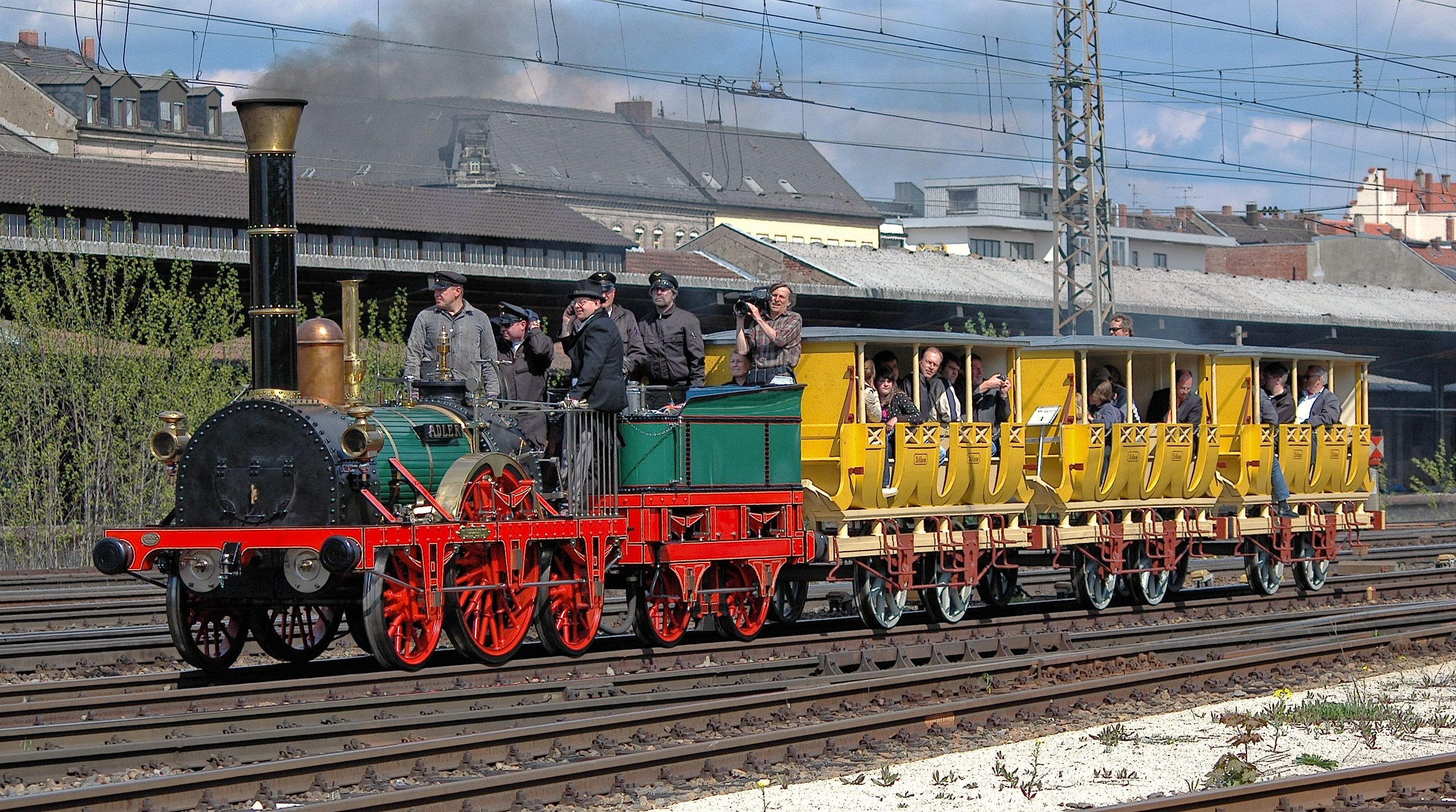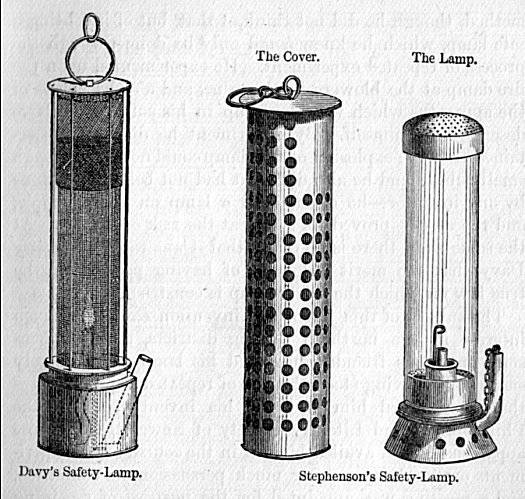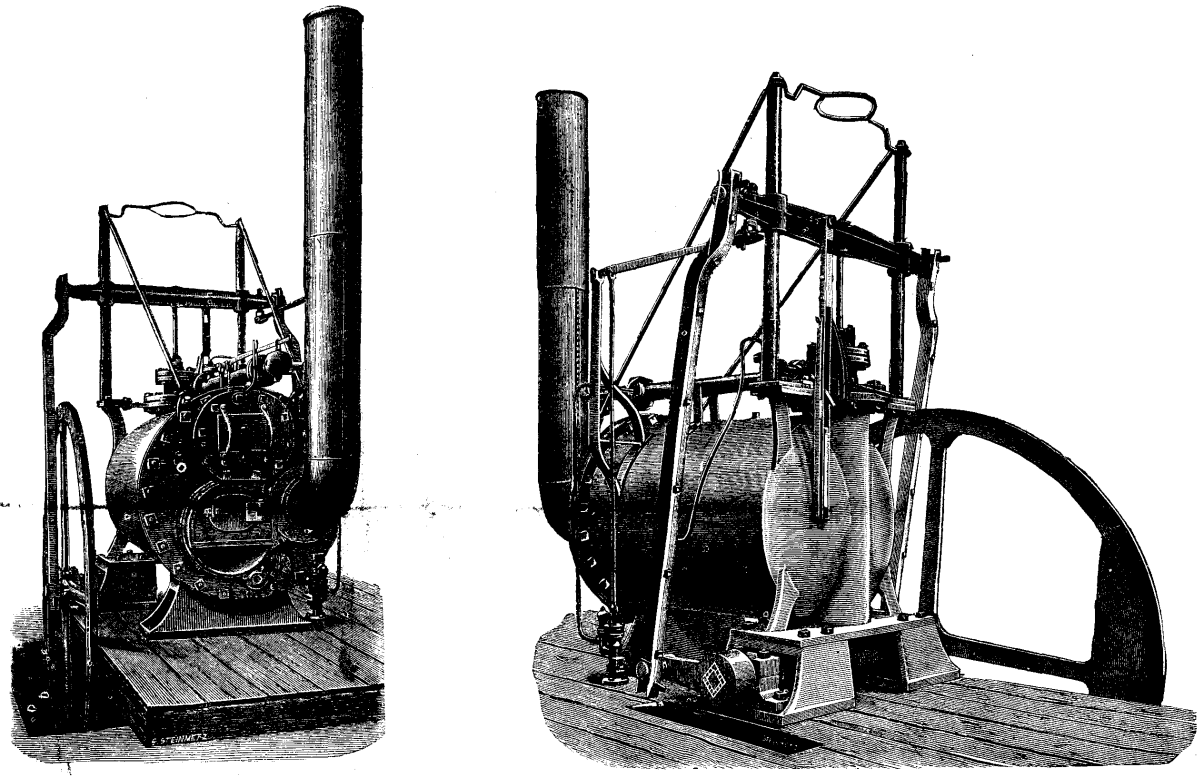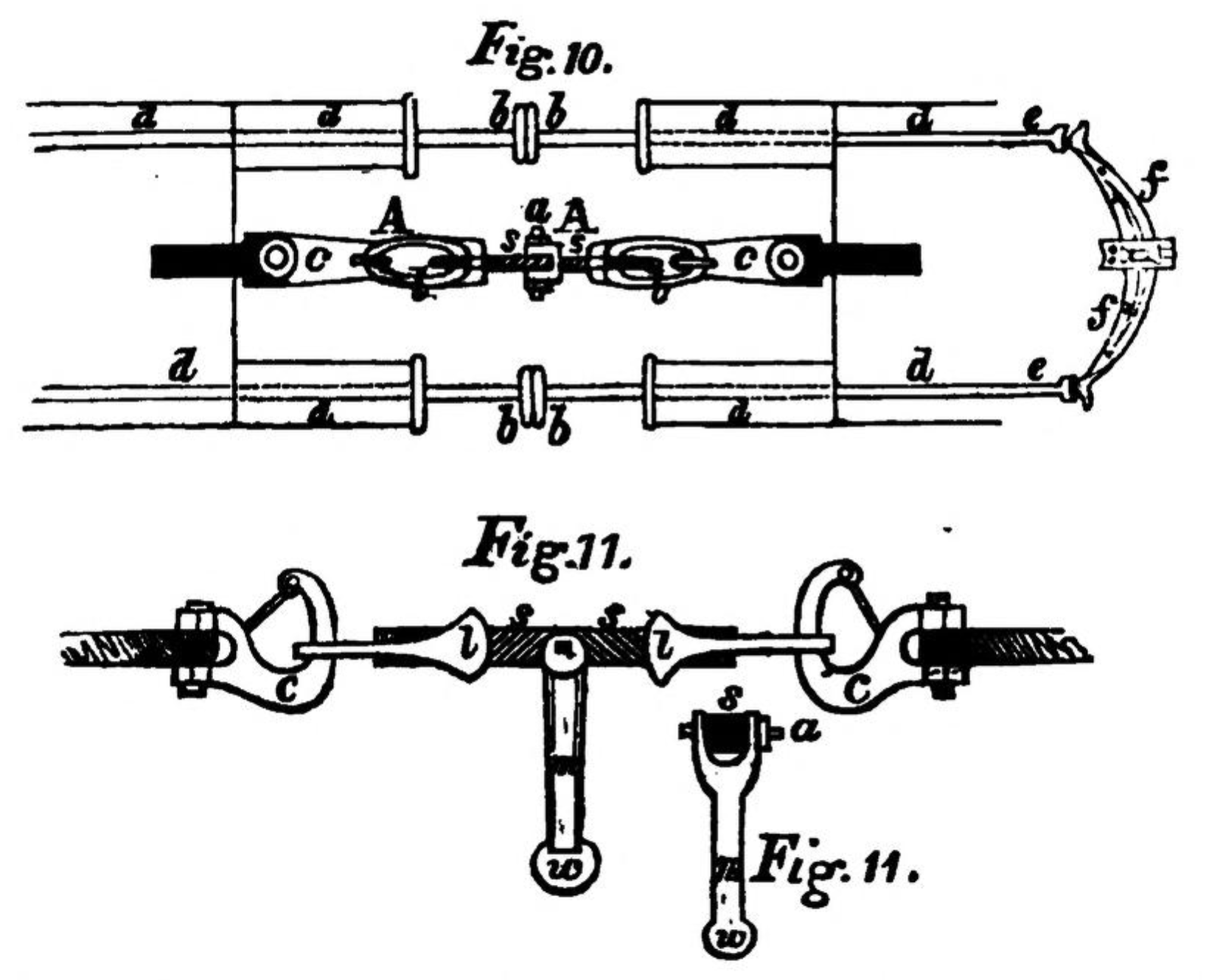|
Stephenson's Rocket
Stephenson's ''Rocket'' is an early steam locomotive of 0-2-2 wheel arrangement. It was built for and won the Rainhill Trials of the Liverpool and Manchester Railway (L&MR), held in October 1829 to show that improved locomotives would be more efficient than stationary steam engines. ''Rocket'' was designed and built by Robert Stephenson in 1829, and built at the Forth Street Works of his company in Newcastle upon Tyne. Though ''Rocket'' was not the first steam locomotive, it was the first to bring together several innovations that produced the most advanced locomotive of its day. It is the most famous example of an evolving design of locomotives by Stephenson, and became the template for most steam engines in the following 150 years. The locomotive was displayed in the Science Museum in London until 2018, after which it was briefly exhibited at sites around the UK, ultimately at National Railway Museum in York. Since 2023, it has been based at the Locomotion Museum in ... [...More Info...] [...Related Items...] OR: [Wikipedia] [Google] [Baidu] |
Robert Stephenson And Company
Robert Stephenson and Company was a locomotive manufacturing company founded in 1823 in Forth Street, Newcastle upon Tyne in England. It was the first company in the world created specifically to build Steam locomotive, railway engines. Famous early locomotives were Locomotion No. 1, ''Locomotion'' No. 1 and ''Stephenson's Rocket, Rocket''. By 1899, 3,000 locomotives had been built at the Forth Street site, and a new company was formed, Robert Stephenson and Company Limited, and the Darlington works was opened. In 1937, the company merged with R. & W. Hawthorn, Leslie and Company, Hawthorn Leslie to form Robert Stephenson and Hawthorns. In 1944, they became part of English Electric. Foundation and early success The company was set up in 1823 in Forth Street, Newcastle upon Tyne in England by George Stephenson, his son Robert Stephenson, Robert, with Edward Pease (railway pioneer), Edward Pease and Thomas Richardson (businessman), Thomas Richardson. The manager of the works b ... [...More Info...] [...Related Items...] OR: [Wikipedia] [Google] [Baidu] |
George Stephenson
George Stephenson (9 June 1781 – 12 August 1848) was an English civil engineer and Mechanical engineering, mechanical engineer during the Industrial Revolution. Renowned as the "Father of Railways", Stephenson was considered by the Victorian era, Victorians as a great example of diligent application and thirst for improvement. His chosen Track gauge#The Stockton and Darlington Railway, rail gauge, sometimes called "Stephenson gauge", was the basis for the standard gauge used by most of the world's railways. Pioneered by Stephenson, rail transport was one of the most important technological inventions of the 19th century and a key component of the Industrial Revolution. Built by George and his son Robert Stephenson, Robert's company Robert Stephenson and Company, the Locomotion No. 1, ''Locomotion'' No. 1 was the first steam locomotive to carry passengers on a public rail line, the Stockton and Darlington Railway in 1825. George also built the first public inter-city railway ... [...More Info...] [...Related Items...] OR: [Wikipedia] [Google] [Baidu] |
Stephenson's Rocket
Stephenson's ''Rocket'' is an early steam locomotive of 0-2-2 wheel arrangement. It was built for and won the Rainhill Trials of the Liverpool and Manchester Railway (L&MR), held in October 1829 to show that improved locomotives would be more efficient than stationary steam engines. ''Rocket'' was designed and built by Robert Stephenson in 1829, and built at the Forth Street Works of his company in Newcastle upon Tyne. Though ''Rocket'' was not the first steam locomotive, it was the first to bring together several innovations that produced the most advanced locomotive of its day. It is the most famous example of an evolving design of locomotives by Stephenson, and became the template for most steam engines in the following 150 years. The locomotive was displayed in the Science Museum in London until 2018, after which it was briefly exhibited at sites around the UK, ultimately at National Railway Museum in York. Since 2023, it has been based at the Locomotion Museum in ... [...More Info...] [...Related Items...] OR: [Wikipedia] [Google] [Baidu] |
Replica Rocket And Coach
A replica is an exact (usually 1:1 in scale) copy or remake of an object, made out of the same raw materials, whether a molecule, a work of art, or a commercial product. The term is also used for copies that closely resemble the original, without claiming to be identical. Copies or reproductions of documents, books, manuscripts, maps or art prints are called ''facsimiles''. Replicas have been sometimes sold as originals, a type of fraud. Most replicas have more innocent purposes. Fragile originals need protection, while the public can examine a replica in a museum. Replicas are often manufactured and sold as souvenirs. Not all incorrectly attributed items are intentional forgeries. In the same way that a museum shop might sell a print of a painting or a replica of a vase, copies of statues, paintings, and other precious artifacts have been popular through the ages. However, replicas have often been used illegally for forgery and counterfeits, especially of money and coins, b ... [...More Info...] [...Related Items...] OR: [Wikipedia] [Google] [Baidu] |
John Urpeth Rastrick
John Urpeth Rastrick (26 January 1780 – 1 November 1856) was one of the first English steam locomotive builders. In partnership with James Foster, he formed Foster, Rastrick and Company, the locomotive construction company that built the '' Stourbridge Lion'' in 1829 for export to the Delaware and Hudson Railroad in America. From the 1830s he concentrated on civil engineering with his major project from 1838 being the construction of the London and Brighton Railway. Early years Rastrick was born in Morpeth, Northumberland, to John Rastrick and Mary (Urpeth). He attended local public schools; at age 15, in 1795 he was apprenticed in his father's engineering practice. In 1802 he was hired by the Ketley Ironworks in Shropshire. Hazeldine & Rastrick After five years at Ketley, Rastrick partnered with John Hazledine, in Bridgnorth, Shropshire. While at Bridgnorth, Rastrick helped Richard Trevithick develop his ideas for the high pressure steam engine and locomotive, an ... [...More Info...] [...Related Items...] OR: [Wikipedia] [Google] [Baidu] |
Cumberland (1826 Ship)
''Cumberland'' was launched at Holyhead in 1826 as a steam packet. In 1839 she underwent conversion to a sail barque. In 1846 ''Cumberland'' transported Parkhurst apprentices to the Swan River Colony. She foundered on 23 October 1849 while carrying rice from Bally, Netherlands East Indies, to Hong Kong. Career Steam packet Boulton, Watt, & Co. provided the engines for ''Cumberland'' and her sister ship ''Solvay''. She had masts to augment her engines. Because she had to give up potential cargo space to house the engines and the coal they required, her burthen, a measure of cargo volume, was reduced. This was not critical for packets as they carried passengers and mail. Packets under contract to the Royal Mail were banned from carrying cargo. ''Cumberland'' first appeared in ''Lloyd's Register'' (LR) in 1827 with J. Beaney, master, ''Liverpool Shipping Company'', owner, and trade Liverpool–London. Conversion In 1838–9 ''Cumberland'' underwent conversion from steam to ... [...More Info...] [...Related Items...] OR: [Wikipedia] [Google] [Baidu] |
Port Carlisle
Port Carlisle is a coastal village in Cumberland, Cumbria, England. It is in the civil parish of Bowness-on-Solway. Its original name was Fisher's Cross, but when it became the terminus of the Carlisle Canal it was renamed Port Carlisle. During the lifetime of the canal it was of considerable importance as the sea outlet for Carlisle, handling both freight and passengers. With the building of the much bigger Silloth docks, the canal was redundant. Some through trade continued via the Port Carlisle Railway, but diminished as the Solway silted up. The canal and railway The Carlisle canal was built to allow sea access for Carlisle to Ireland, Scotland and Liverpool. The sea terminus was at Port Carlisle, and a sea lock and basin was built there in 1819. Four years later the canal was completed to Carlisle, and Port Carlisle became the centre of a good deal of transhipment trade, and passenger traffic via steam packets. However, the canal was short-lived due to competition from ... [...More Info...] [...Related Items...] OR: [Wikipedia] [Google] [Baidu] |
Lighter (barge)
A lighter is a type of flat-bottomed barge used to transfer goods and passengers to and from Mooring (watercraft), moored ships. Lighters were traditionally unpowered and were moved and steered using long oars called "sweeps" and the motive power of water currents. They were operated by skilled workers called lightermen and were a characteristic sight in London Docklands, London's docks until about the 1960s, when technological changes made this form of lightering largely redundant. Unpowered lighters continue to be moved by powered tugs, however, and lighters may also now themselves be powered. The term is also used in the Lighter Aboard Ship (LASH) system. The name itself is of uncertain origin, but is believed to possibly derive from an old Dutch language, Dutch or German language, German word, ''lichten'' (to lighten or unload). In Dutch and German, the words ''lichter'' or ''Leichter'' are still used for smaller ships that take over goods from larger ships. Lighters, albeit ... [...More Info...] [...Related Items...] OR: [Wikipedia] [Google] [Baidu] |
Killingworth
Killingworth is a town in North Tyneside, Tyne and Wear, England, within the historic county of Northumberland. Killingworth was built as a new town in the 1960s, next to Killingworth Village, which existed for centuries before the new town was built. Other nearby villages include Forest Hall, West Moor and Backworth. Killingworth has bus links to the rest of Tyne and Wear. The town is not on the Tyne and Wear Metro network; its nearest stations are Palmersville and Benton. The town of Killingworth in Australia is named after the British original because of its extensive coal mines. Culture Killingworth was used as a filming location for the 1973 BBC sitcom ''Whatever Happened to the Likely Lads?'', with one of the houses on Agincourt on the Highfields estate featuring as the home of Bob and Thelma Ferris. In an episode of the architecture series '' Grundy's Wonders'' on Tyne Tees, John Grundy deemed Killingworth's former British Gas Research Centre to be the ... [...More Info...] [...Related Items...] OR: [Wikipedia] [Google] [Baidu] |
Henry Booth
Henry Booth (4 April 1788 – 28 March 1869) was a British corn merchant, businessman and engineer particularly known as one of the key people behind the construction and management of the pioneering Liverpool and Manchester Railway (L&M), the world's first steam railway conducting both scheduled passenger services and freight. Biography Henry Booth was born in Rodney Street, Liverpool, Rodney Street, Liverpool, England, a descendant of the Booths of Twemlow. His father, Thomas, was the son of a yeoman farmer of Orford, Cheshire. Thomas and his brother George apprenticed to corn merchant Dobson in 1767, and 1774 began business as corn factors on the own account at 17 King Street, Liverpool. As eldest son, it was expected Henry would follow his father in that business and was sent to a Dr. Shepherd, a Presbyterian minister in the nearby village of Gateacre for instruction. He showed an aptitude for reading books, poetry, practical mechanics and was noted for a good eye for ... [...More Info...] [...Related Items...] OR: [Wikipedia] [Google] [Baidu] |




